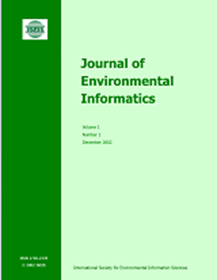评价建筑系统能源性能优劣排序
IF 5.4
1区 环境科学与生态学
Q1 ENVIRONMENTAL SCIENCES
引用次数: 9
摘要
如今,对可持续建筑的需求越来越大。建筑的主要目的是为居住者提供一个舒适的生活环境,考虑到不同的方面,包括热、视觉、声学舒适以及室内空气质量。在提高建筑舒适度的同时,减少碳足迹和能源消耗率,为建筑使用者创造更好的生活和工作环境。本研究提出了一个框架,旨在通过评估安装建筑系统的不同替代方案,在建筑设计阶段使用建筑信息模型(BIM)提高建筑系统的能源性能。专家们认为,仅通过分析能耗率而不考虑经济和环境因素来评价建筑的能源性能是不够的。因此,本文采用四个主要标准对建筑系统进行评价;运营成本节约、每年总能耗、生命周期成本节约和碳排放。应用多准则决策技术,利用优劣排序(SIR)来研究不同方案的行为。进行敏感性分析,以检测影响环境问题和建筑系统能源性能的不同定义标准的重要性和有效性。通过考虑运营成本、生命周期成本、能源消耗和碳排放四个标准,提出了一个案例研究,以展示在学术建筑上使用拟议框架。对标准的权重进行敏感性分析,以确定每个标准的关键程度以及它们如何影响备选方案的排名。总共模拟了36种组合,考虑改变权重和过程(SAW vs. TOPSIS)。具有最高重复百分比的排名被认为是识别最主要的替代方案。本文章由计算机程序翻译,如有差异,请以英文原文为准。
Evaluating Building Systems Energy Performance Superiority and Inferiority Ranking
Nowadays, the demand for sustainable buildings is increasing. The main purpose of buildings is to provide a comfort- able living environment for their occupants, considering different aspects including thermal, visual, and acoustic comfort as well as In- door Air Quality. Decreasing carbon footprint and energy consumption rates while increasing comfort level can help to achieve better living and working environment for building users. This research proposes a framework that aims at improving building system energy performance using building information modeling (BIM) during buildings’ design stage by evaluating different alternatives for install- ed building systems. According to experts’ opinions, evaluating buildings’ energy performance by analyzing the energy consumption rates alone without including economic and environmental factors is insufficient. Therefore, in this paper, building systems are evalu- ated using four main criteria; operating cost savings, total energy consumption per year, Lifecycle cost savings, and carbon emissions. A Multiple Criteria Decision-making (MCDM) technique is applied using Superiority and Inferiority Ranking (SIR) to study the behav- ior of different alternatives. Sensitivity analysis is performed to detect the criticality and effectiveness of the different defined criteria that influence environmental concerns and building system energy performance. A case study is presented to demonstrate the use of the proposed framework on an academic building by considering four criteria which are Operating Costs, Life Cycle Cost, Energy Con- sumption, and Carbon Emissions. Sensitivity analysis is performed on the weights of the criteria to determine how critical each crite- rion is and how they affect the ranking of the alternatives. A total of 36 combinations are simulated, considering changing the weights and procedure (SAW vs. TOPSIS). The rank that has the top repetitive percentage is considered to identify the most dominating alternative.
求助全文
通过发布文献求助,成功后即可免费获取论文全文。
去求助
来源期刊

Journal of Environmental Informatics
ENVIRONMENTAL SCIENCES-
CiteScore
12.40
自引率
2.90%
发文量
7
审稿时长
24 months
期刊介绍:
Journal of Environmental Informatics (JEI) is an international, peer-reviewed, and interdisciplinary publication designed to foster research innovation and discovery on basic science and information technology for addressing various environmental problems. The journal aims to motivate and enhance the integration of science and technology to help develop sustainable solutions that are consensus-oriented, risk-informed, scientifically-based and cost-effective. JEI serves researchers, educators and practitioners who are interested in theoretical and/or applied aspects of environmental science, regardless of disciplinary boundaries. The topics addressed by the journal include:
- Planning of energy, environmental and ecological management systems
- Simulation, optimization and Environmental decision support
- Environmental geomatics - GIS, RS and other spatial information technologies
- Informatics for environmental chemistry and biochemistry
- Environmental applications of functional materials
- Environmental phenomena at atomic, molecular and macromolecular scales
- Modeling of chemical, biological and environmental processes
- Modeling of biotechnological systems for enhanced pollution mitigation
- Computer graphics and visualization for environmental decision support
- Artificial intelligence and expert systems for environmental applications
- Environmental statistics and risk analysis
- Climate modeling, downscaling, impact assessment, and adaptation planning
- Other areas of environmental systems science and information technology.
 求助内容:
求助内容: 应助结果提醒方式:
应助结果提醒方式:


